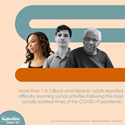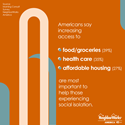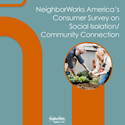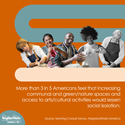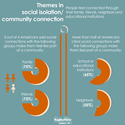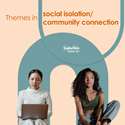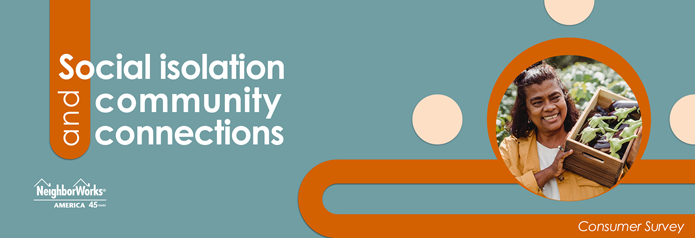
As the World Health Organization (WHO) calls loneliness a ‘pressing health threat’ with health effects as bad as smoking up to 15 cigarettes a day, social isolation is top of mind for many Americans. While most Americans feel a sense of community through their family, friends, or other sources, the impacts of social isolation are particularly felt among historically marginalized groups, including lower-income Americans and Black and Hispanic communities, and those living in urban areas. Americans point to solutions like increasing access to housing, food/groceries, and health care; and creating more communal and green/nature spaces. See press release.
Themes in social isolation/community connection
People feel connected through their family, friends, neighbors and educational institutions. 3 out of 4 Americans said social connections with the following groups make them feel like part of a community:- Friends (73%)
- Family (75%)
- Neighbors (55%)
- School or educational institutions (65%)
Perceptions of personal difficulty vary by key demographics such as race/ethnicity, income, and community type.
- Black and Hispanic adults report greater personal difficulty resuming social activities compared to white adults.
- Lower-income Americans and those living in urban communities have experienced more personal difficulty resuming social activities compared to higher-income adults and those in suburban and rural communities.
Addressing Social Isolation
Americans believe increasing access to key services and amenities would be important means of addressing social isolation.- Improved access to food/groceries (39%), healthcare (35%), and affordable housing (27%) are top-of-mind for Americans when it comes to solutions to helping those experiencing social isolation.
- Low-(30%) and middle-income (28%) Americans are more likely than those of higher-income levels (18%) to view affordable housing as an important means of addressing social isolation.
Housing-specific initiatives have a role to play in addressing social isolation.
- More than three-in-five Americans believe that communal initiatives like increasing communal spaces (66%), increasing green/nature spaces (64%), and increasing access to arts and cultural activities (63%) would be impactful ways to lessen social isolation.
- Increasing multi-unit (61%) and mixed-age (57%) housing is also seen as an impactful way of addressing social isolation.
Methodology
This poll was conducted between November 10 - November 12, 2023 among a sample of 2,205 adults. The interviews were conducted online and the data were weighted to approximate a target sample of adults based on age, gender, race, educational attainment, region, gender by age, and race by educational attainment. Results from the full survey have a margin of error of plus or minus 2 percentage points.

